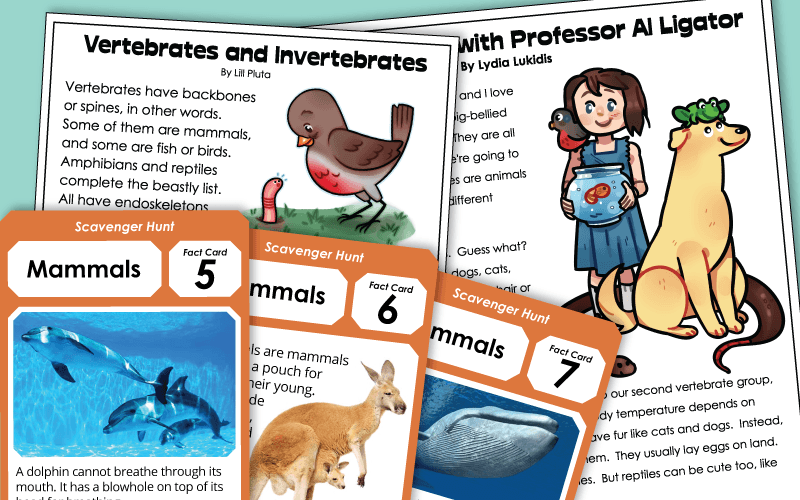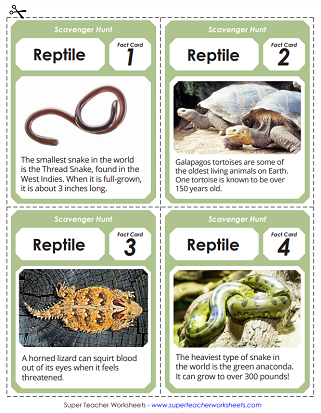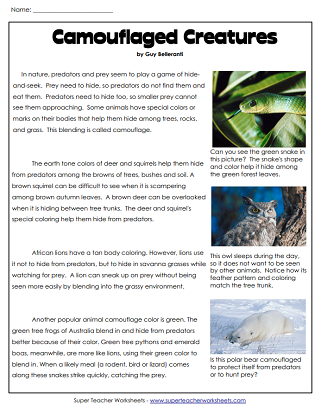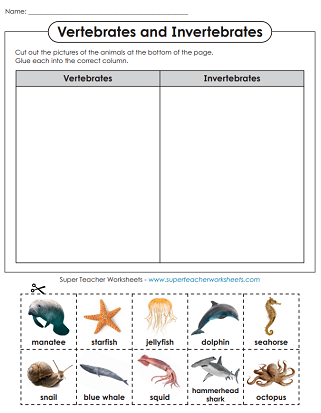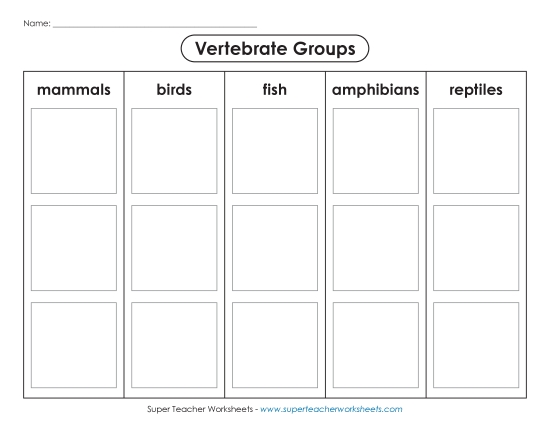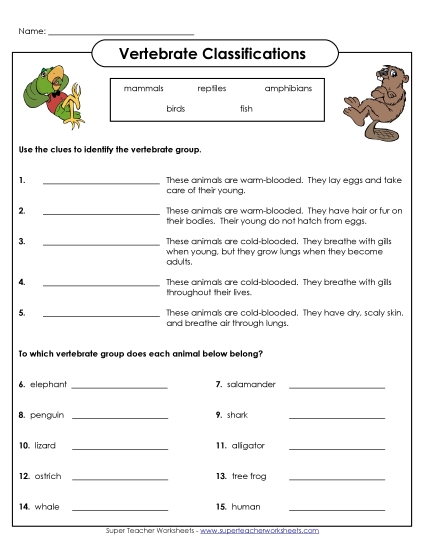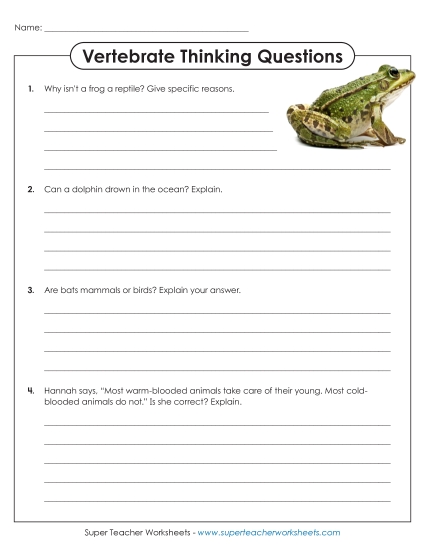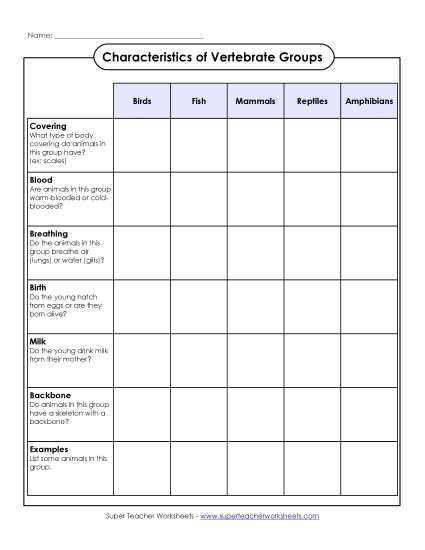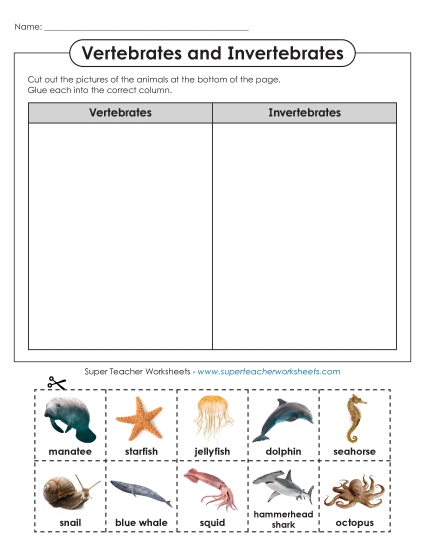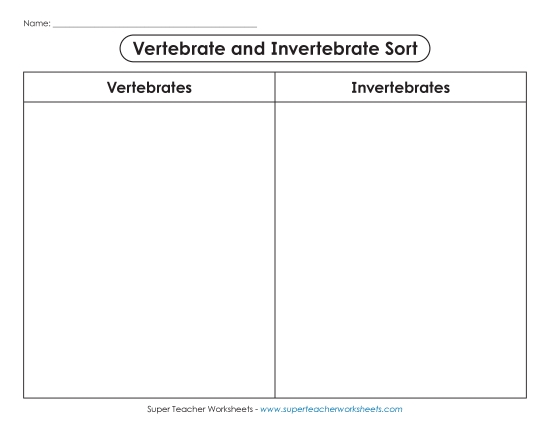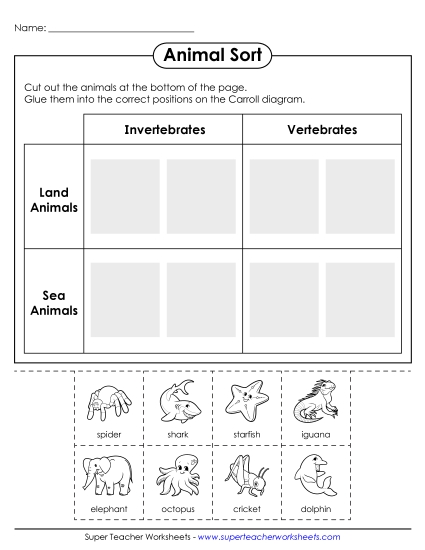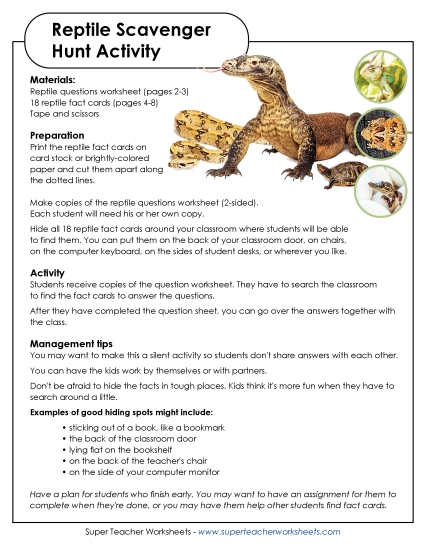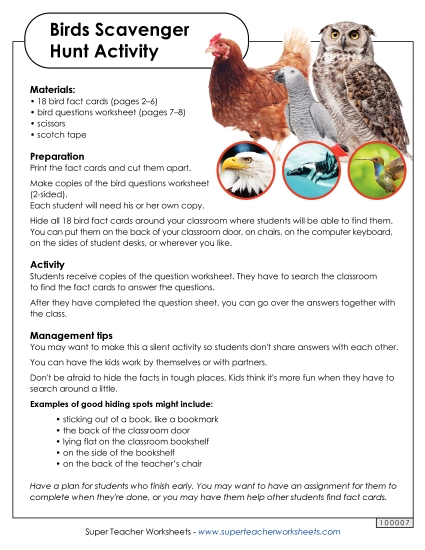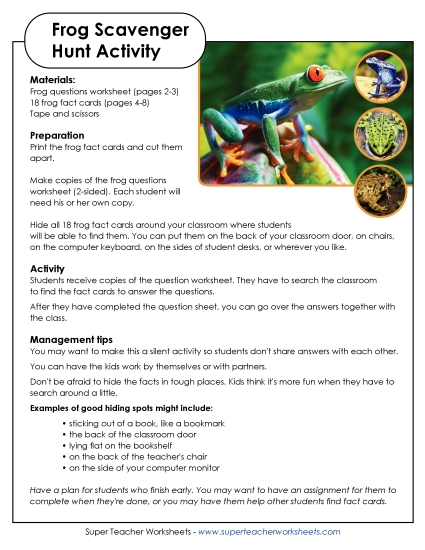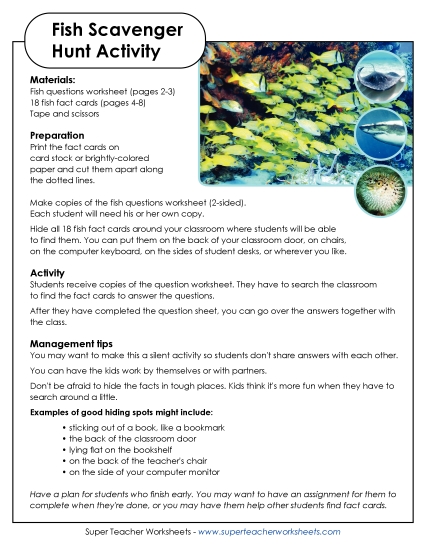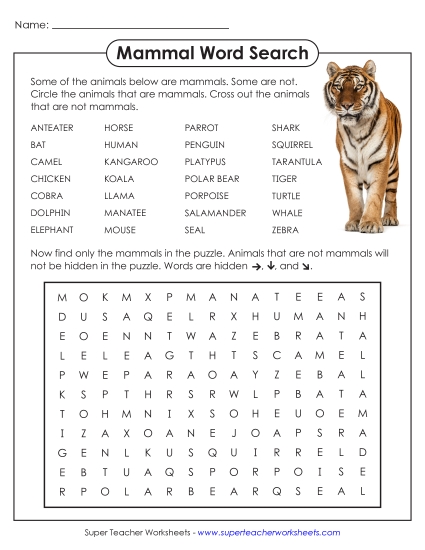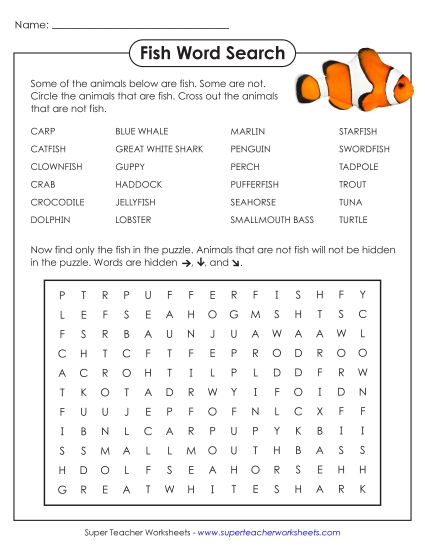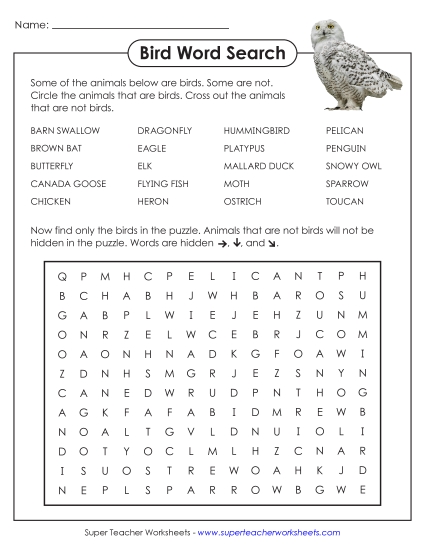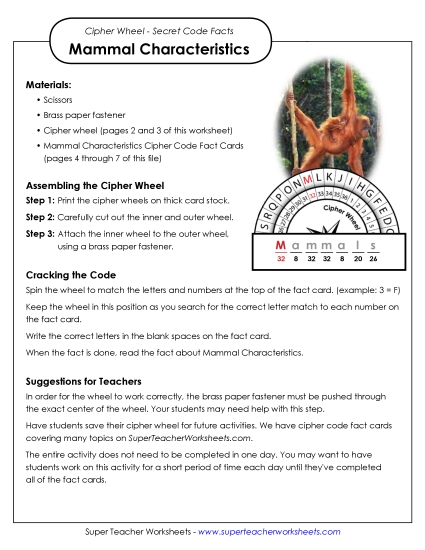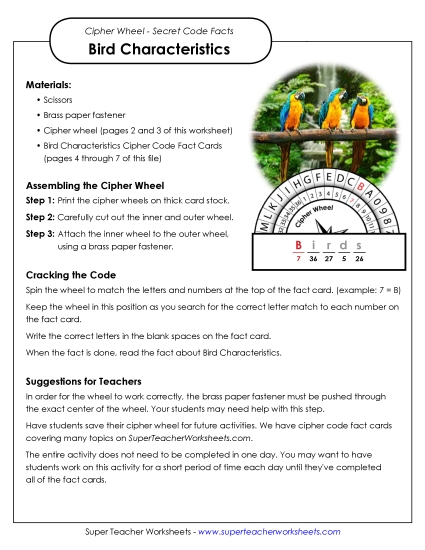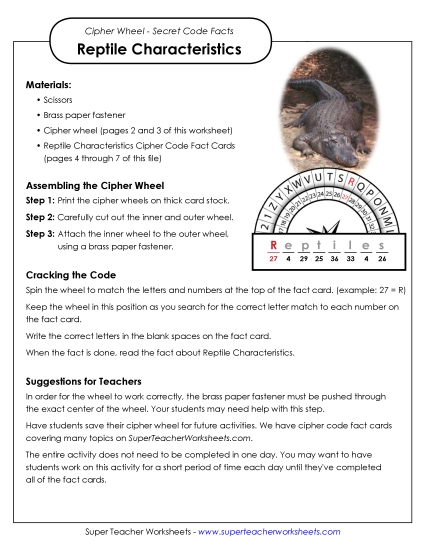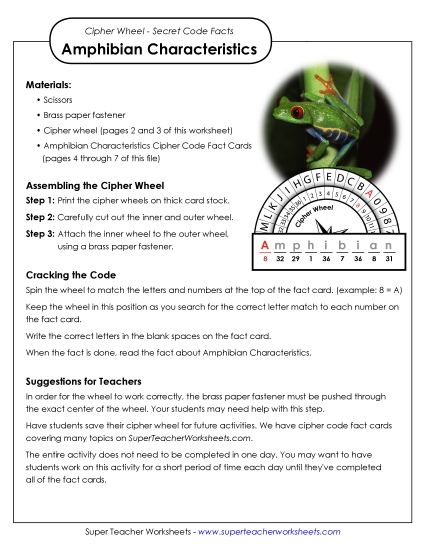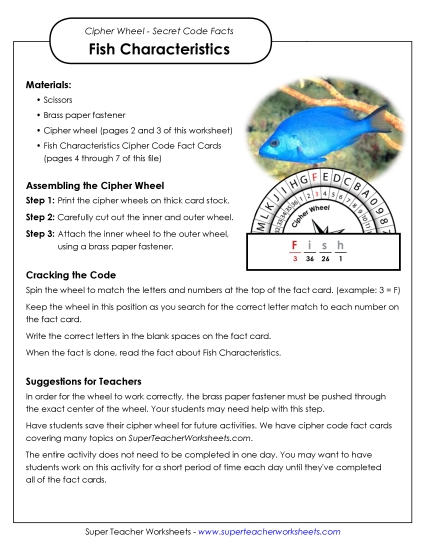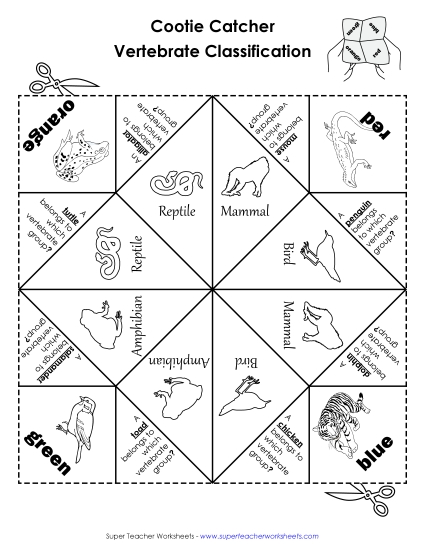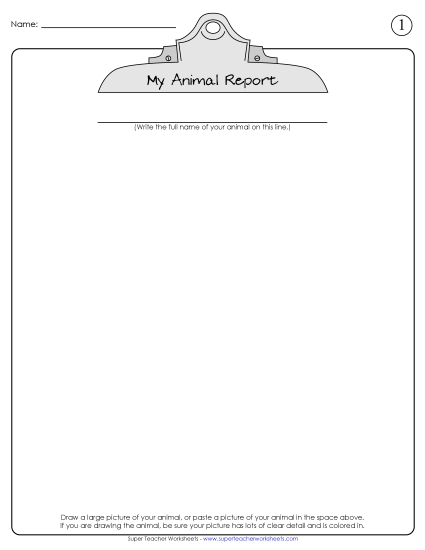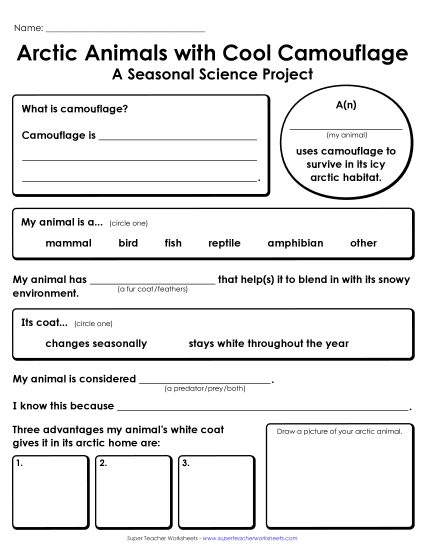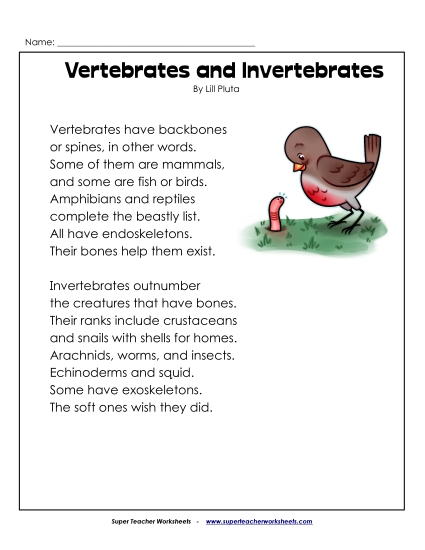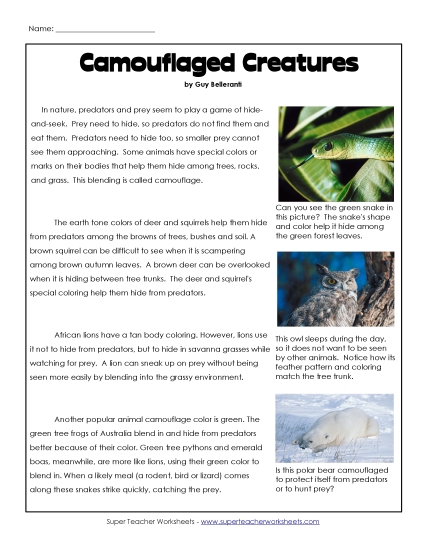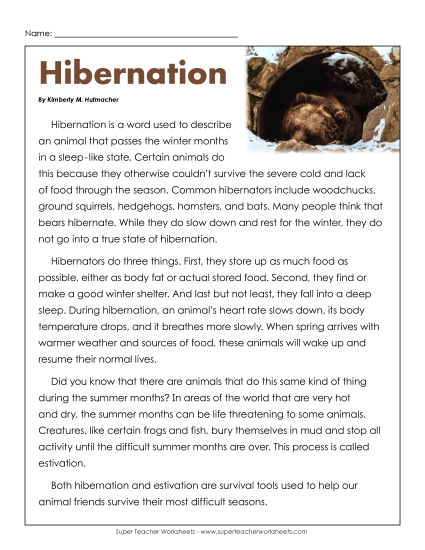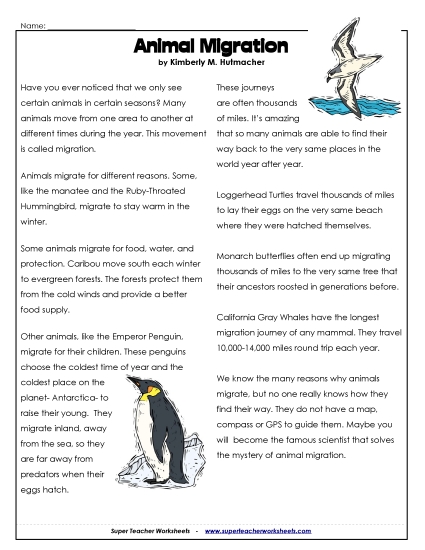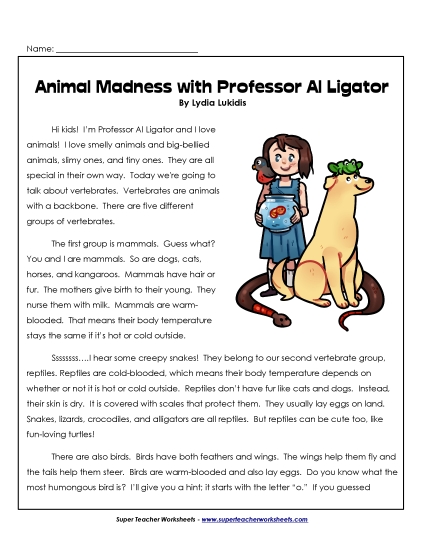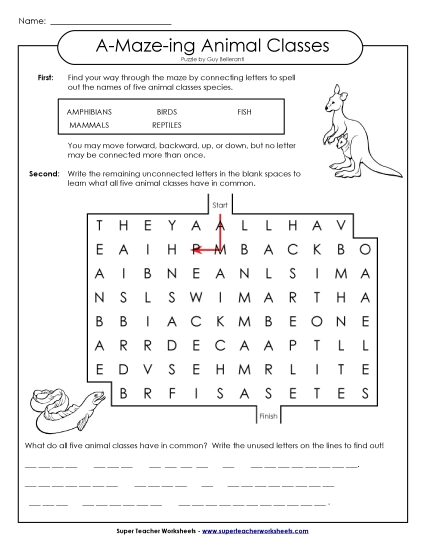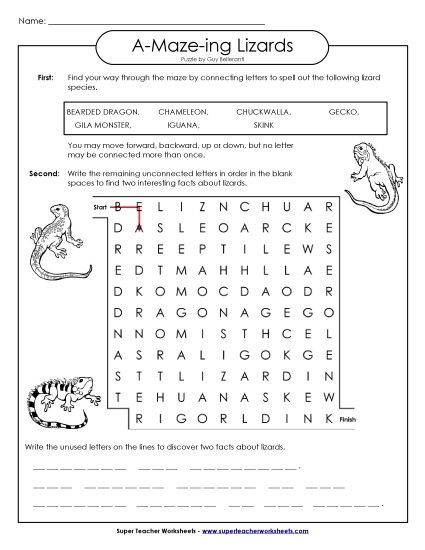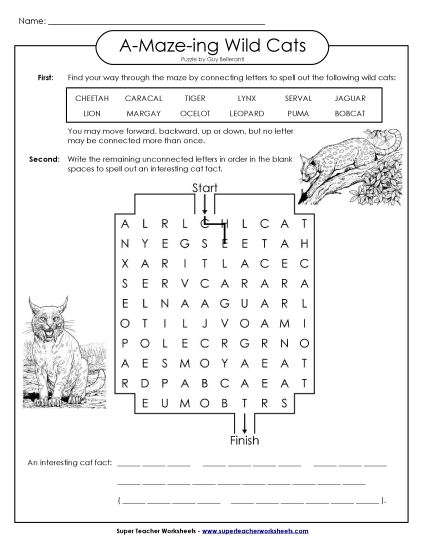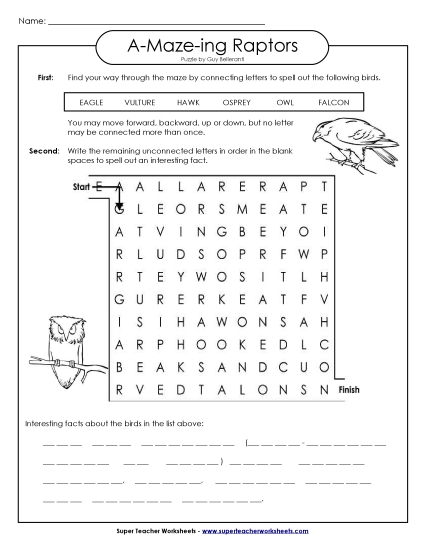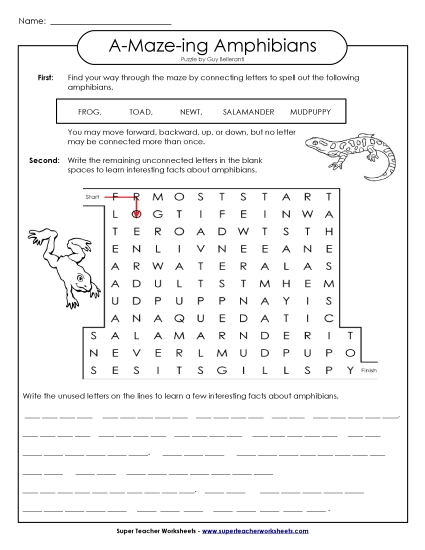Research any animal. Write about your animal's habitat and anatomy. List interesting facts about the animal. Answer the questions about your animal. Includes step-by-step instructions and a grading rubric.
2nd through 4th Grades
Research an animal from the Arctic and tell how if camouflages into its surroundings.
3rd through 6th Grades
Learn what makes vertebrates and invertebrates different in this clever poem! Kids will choose an animal to classify as a vertebrate or invertebrate in a writing activity, plus learn some new vocabulary words, and answer reading comprehension questions. An answer key is included.
3rd and 4th Grades
Find out how pattern camouflage, color camouflage, and mimicry can benefit predators and prey.
3rd through 5th Grades
Find out why some animals hibernate, and how their bodies change while they sleep during the winter months.
3rd through 5th Grades
Learn how and why animals migrate from one place to another.
3rd through 5th Grades
Professor Al Ligator teaches kids about the five groups of vertebrates. Kids will learn all about mammals, reptiles, birds, amphibians, and fish.
3rd Grade
Connect letters to spell the names of five different animal groups (mammals, amphibians , birds, reptiles, fish). The unused letters will tell you what the animal groups have in common.
2nd through 4th Grades
Connect the letters in the lizard species names. Then write the unused letters in the blank to find an interesting fact about lizards.
2nd through 4th Grades
Search for the wild cats in the puzzle. The letters that are not used will spell out a fascinating fact about cats.
2nd through 4th Grades
After following the maze of raptor words, write the extra letters on the line to learn a cool fact about birds of prey.
2nd through 4th Grades
First find the species of frogs, toads, and salamanders in the puzzle. Then reveal the fun fact by copying the extra letters on the blank lines.
2nd through 4th Grades
Find your way through the maze by highlighting the letters in the names of the shark species.
2nd through 4th Grades
Reading comprehension passages about different animal species.
Food Chain WorksheetsLearn about predator/prey, producers/consumers, and the food chain with these worksheets.
InvertebratesDownload invertebrate reading comprehension articles, word mazes, a sorting activity, and a scavenger hunt.
States of Matter PrintablesPrintable materials for teaching students about solids, liquids, and gases.
Scavenger HuntsStudents find fun fact cards hidden around the classroom. They use the fact cards to answer questions on a worksheet. Topics include animals, human body, space, weather, and more.
